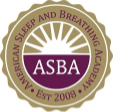Sleep Apnea & Snoring Treatment
By Ira Shapira DDS

A recent study published in the British Medical Journal has shown improvement in mild to moderate apnea with learning to play the Didgeridoo. The didgeridoo is possibly the oldest musical instrument and comes from northern Australia where it is an integral part of Aboriginal life. It is made from tree limbs and trunks that have been hollowed by termites; it has a low pitched resonant sound and is traditionally about 5 feet long. The aborigines squat on the ground holding the one end and laying the other on the earth to play.
The study in Zurich, Switzerland included 25 people who were provided lessons and regular practice sessions. The average time spent practicing was 25 minutes 6 times a week. Playing the didgeridoo requires circular breathing, a process whereby one continues to blow using the cheeks like bellows while, at the same time, inhaling through the nose. It is believed that this training reduces the collapsibility of the upper pharyngeal airway. After 4 months, patients reported less sleepiness (scored by Epworth sleepiness test), and their partners reported that their observed sleep was less disturbed. There was a significant reduction in the apnea/ hypopnea index as well. Learning circular breathing is somewhat difficult, and study participants received a series of lessons from an experienced player.
CPAP is the gold standard of medical treatment for sleep apnea, but is associated with poor compliance (23-45%). Oral appliances that treat apnea have been used for many years with considerable success. In the February issue of Sleep, oral appliances were shown as a standard alternative for CPAP in mild and moderate sleep apnea. Oral appliances reduce the collapsibility of the upper airway by bringing the jaw downward and forward and have been shown to have very good to excellent compliance compared to CPAP. Patients report that they like being free of mask, hose and inconvenience of CPAP. Oral appliances can also be used successfully with patients having severe apnea, although current guidelines recommend that it only be used for CPAP failures and non-compliant patients. It is vital that all patients receiving alternative care receive follow-up sleep studies to insure that apnea is well treated. It is interesting to note that some patients report good sleep with oral appliances that may continue for several days after discontinuing appliance use.
Patients interested in oral appliance therapy can go to the site of the Academy of Dental Sleep Medicine (www. dentalsleepmed.org). I recommend finding a diplomat of the Board of Dental Sleep Medicine if possible, as these doctors have shown a commitment to additional training that is needed to provide the best care. www.quietsleep.com is also a good site to help locate a dentist.
This author has purchased a didgeridoo and is investigating implementing didgeridoo lessons and practice as a pharyngeal exercise to be used with oral appliances and possibly in lieu of appliances with additional treatments such as weight loss and positional training.
Doctor Shapira is a founding member of the Sleep Disorder Dental Society that is now the Academy of Dental Sleep Medicine and a former assistant professor at Rush Medical School in the sleep service. He is a diplomat of the Academy of Dental Sleep Medicine and has been treating sleep disorders with oral appliances for 25 years and practices. He may be reached at 847-623-5530 or via email at delanydent@aol.com.






